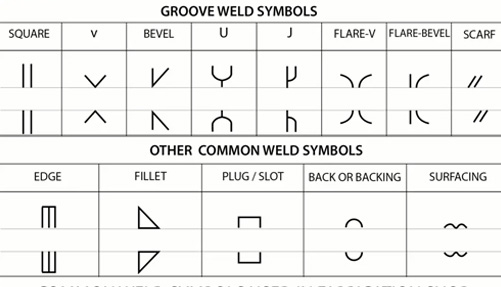How has advancements in technology affected consumer electronics? The customer electronics enterprise has undergone a first-rate transformation over the past few years, driven by rapid technological advancements. These innovations have redefined the goods we use every day and reshaped client behaviour, international manufacturing landscapes, and financial growth patterns. This article delves into the multifaceted results of technological development on consumer electronics, supported by accurate information and modern-day traits.
Evolution of Consumer Electronics Through Technology
Miniaturization and Portability
One of the most tremendous influences on technological development is the miniaturization of digital additives. The development of microprocessors and compact batteries has led to the era of portable gadgets, including smartphones, drugs, and wearables. For instance, the global wearable generation marketplace was worth about $116.2 billion in 2024, reflecting the developing consumer demand for portable and handy electronic gadgets.
From early bulky computer systems to state-of-the-art lightweight, glossy laptops and capsules, miniaturization has made electronics extra available and flexible. The creation of five-nanometer chip technology is more suitable for purchaser electronics’ overall performance chips, for instance, which have revolutionized laptop efficiency by handing over excessive overall performance even as it consumes much less energy, leading to extended battery lifestyles.
Integration of Artificial Intelligence (AI)
Artificial Intelligence has become a cornerstone of current customer electronics. Devices now feature AI-pushed functionalities, improving personal studies through personalization and automation. AI-powered assistants like Amazon Alexa, Google Assistant, and Apple’s Siri have transformed how consumers engage with their gadgets, presenting voice recognition, automation, and predictive suggestions.
At the Consumer Electronics Show (CES) 2024, companies like Google, Amazon, LG, and Hisense showcased AI-included merchandise, highlighting the increasing impact of generative AI in personal generation. Nvidia brought a mini AI supercomputer and foundational AI fashions, while Amazon’s Alexa, stronger with AI, will debut in BMW motors. However, despite these innovations, customer scepticism regarding AI’s safety and reliability remains a difficulty.
Internet of Things (IoT) and Smart Homes
The Internet of Things (IoT) has accelerated the capabilities of client electronics by allowing interconnected devices to communicate seamlessly. This connectivity has given upward thrust to clever houses, where appliances, lighting, security structures, and more are controlled centrally or remotely.
The global clever domestic market is projected to attain a valuation of $2.17 trillion, driven by using fundamental electronics manufacturers that specialize in techniques to govern this burgeoning region. Companies like Samsung and LG have showcased how their appliances can interconnect and improve household automation through AI, reflecting a broader enterprise trend of diversifying past hardware into virtual services.
Economic Impact and Market Growth

Market Expansion
Technological improvements have considerably contributed to the increase of the patron electronics market. In 2024, the worldwide consumer electronics market was worth about $1.Three trillion is predicted to register a compound annual growth charge (CAGR) of 13.2% between 2024 and 2032.
This enlargement is pushed by fast technological adjustments and heavy investments in studies and development (R&D), with producers mainly concerned with modern new products throughout classes.
Shifts in Manufacturing Hubs
Technological progress has also inspired international production dynamics. Companies are diversifying their production bases to mitigate dangers and capitalize on rising markets. For instance, Apple’s production in India is developing, with phone exports surging by nearly 50% inside the first 10 months of the fiscal 12 months. Foxconn and Tata Electronics are generating numerous Apple merchandise in India, together with the excessive-quit iPhone 16 Pro.
Apple’s strategic shift to Indian production aligns with the usa’s “Make in India” subsidy scheme, which has led to cellular telephones surpassing diamonds as India’s biggest export. Expanding production in India allows Apple to offer competitive charges by warding off customs duties and lowering reliance on China amidst US-China exchange tensions.
Changing Consumer Behavior
Demand for Smart and Connected Devices
Consumers are increasingly looking for gadgets that provide seamless connectivity and integration into their daily lives. The proliferation of clever domestic devices, wearable technology, and AI-driven packages reflects this trend. Companies respond by developing merchandise that meets purposeful wishes and beautifies personal reviews through innovative capabilities.
For example, Samsung and LG are developing smart refrigerators with integrated AI that can tune food expiration dates and propose recipes primarily based on to-be-had substances. Similarly, Sony and Microsoft have incorporated cloud gaming services into their gaming consoles, allowing consumers to access high-end games without costly hardware.
Influence of E-Commerce
The rise of e-commerce structures has transformed how customers purchase electronics. The convenience of online purchasing, significant net connectivity, and cell device utilization have driven growth in the consumer electronics market. In 2023, global e-trade income for consumer electronics passed $1 trillion, highlighting a sizable shift in shopping conduct.
This shift has triggered groups to adopt omnichannel advertising techniques to attain customers throughout various virtual touchpoints. Platforms like Amazon, Alibaba, and Best Buy have revolutionized how electronics are offered, offering personalized guidelines and same-day shipping offerings.
Challenges and Considerations
Environmental Impact
The speedy turnover of client electronics increases environmental sustainability issues. E-waste control and the ecological footprint of manufacturing strategies are essential issues that the enterprise should cope with. According to the Global E-Waste Monitor 2024, over 50 million metric heaps of e-waste are generated yearly, with the most straightforward 20% being properly recycled.
To combat this problem, companies are enforcing sustainable practices, such as using recyclable substances, power-green designs, and take-again packages. Apple, for example, has dedicated itself to achieving carbon neutrality across its complete supply chain by 2030, while Dell has introduced laptops made from ocean-safe plastics.
Data Privacy and Security
As devices become more interconnected and AI-driven, issues regarding record privacy and protection have intensified. Consumers are increasingly more aware of how their records are collected, stored, and used. Cybersecurity threats, data breaches, and AI-pushed surveillance are extensive worries in the digital age.
Companies use superior encryption technologies, multi-element authentication, and obvious records regulations to construct client considerations. Governments are also implementing stricter policies, including Europe’s General Data Protection Regulation (GDPR) and California’s Consumer Privacy Act (CCPA), to protect statistics.
Future Outlook
The trajectory of technological advancements suggests persevered evolution inside the client electronics quarter. Emerging technologies, including 5G, augmented reality (AR), and virtual reality (VR), are poised to create new product categories and enhance current ones. The integration of AI will likely become more state-of-the-art, providing deeper personalization and automation skills.
Moreover, as global manufacturing landscapes shift, international locations like India are getting widespread players in electronics production. Dixon Technologies India, the assembler of Google’s Pixel smartphones, is predicted to more than double its sales this financial year due to a rapid increase in neighbourhood electronics manufacturing. This growth is driven by global businesses like Google and Apple transferring their manufacturing chains from China to India.
Key Trends to Watch in 2025 and Beyond:
- Advancements in Quantum Computing: Tech giants like IBM and Google are investing heavily in quantum computing, which could revolutionize encryption and computing speeds.
- The Expansion of the Metaverse: Companies like Meta and Microsoft are exploring how AR and VR can redefine enjoyment and work environments.
- Increased Adoption of 6G Networks: While 5G continues to be rolled out globally, research into the 6G era is already underway, promising even quicker speeds and lower latency.
- Rise of Foldable and Flexible Displays: Samsung, Huawei, and other manufacturers invest in foldable smartphones and rollable screens to redefine the consumer experience.
- Growth of AI-Powered Healthcare Gadgets: Wearable devices like the Apple Watch and Fitbit are increasingly used to monitor fitness metrics, signalling the convergence of fitness tech and client electronics
Conclusion
Technology has reshaped consumer electronics, making gadgets more powerful, transportable, and interconnected. AI, IoT, and miniaturization have brought about smarter and more efficient devices, while e-commerce has transformed purchaser buying behavior. However, demanding situations like e-waste, record security, and privacy issues remain urgent problems that the industry needs to address.
How has advancements in technology affected consumer electronics? As we move into a future pushed via 5G, AI, and clever technologies, consumer electronics will continue evolving, offering exceptional comfort, personalization, and capability. Companies that adapt to those changes while prioritizing sustainability and information privacy will thrive in the ever-evolving virtual landscape

